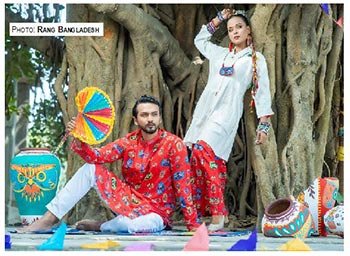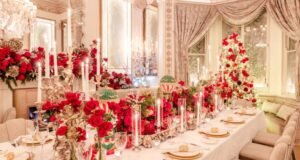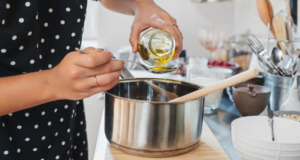
Pohela Boishakh, the Bengali New Year, is a celebration of life, culture, and renewal. It’s a day when Bangladesh blossoms in a riot of colours, and nowhere is this vibrancy more evident than in the traditional attire worn by its people. The fashion of Pohela Boishakh is more than just clothing; it’s a visual representation of cultural identity and festive spirit.
The quintessential Pohela Boishakh outfit for women is the red and white saree. This iconic combination symbolizes purity, prosperity, and the essence of Bengali womanhood. The crisp white saree, often made of cotton or silk, serves as a canvas for the striking red border and motifs. These motifs can range from traditional floral patterns like the “alpana” designs to contemporary interpretations that incorporate modern art. The red bindi, matching bangles, and floral adornments in the hair complete the traditional ensemble.
Men typically opt for the white panjabi, often paired with a red or off-white pajama. The panjabi, a loose-fitting tunic, embodies elegance and comfort, making it perfect for the day’s festivities. The red accents, whether in the form of embroidery or a simple pocket square, echo the dominant color scheme of the celebration. Many men also choose to wear gamchas, traditional Bengali towels, as scarves or head coverings, adding a rustic touch to their attire.
Beyond the classic red and white, other vibrant colours also find their place in Pohela Boishakh fashion. Yellow, representing spring and joy, is a popular choice, as are shades of green, signifying prosperity and new beginnings. Increasingly, designers are incorporating brighter and bolder colours, experimenting with different fabrics and styles to create contemporary outfits that still retain the festive spirit.
The influence of traditional Bengali crafts is also evident in the clothing worn during Pohela Boishakh. Handloom sarees, crafted with intricate weaves and designs, are highly sought after. Jamdani, muslin, and silk sarees, known for their exquisite craftsmanship, add a touch of regal elegance to the celebration. Block printing, batik, and embroidery techniques are also used to create unique and beautiful garments.
Floral accessories are an integral part of Pohela Boishakh fashion. Women adorn their hair with garlands of jasmine, marigold, and other seasonal flowers. The “gajra,” a traditional floral hair accessory, adds a touch of femininity and natural beauty. Flower vendors line the streets, offering a kaleidoscope of colours and fragrances.
Jewellery also plays a significant role in completing the festive look. Terracotta jewellery, with its earthy charm, is a popular choice, reflecting the traditional art and craft of Bengal. Gold jewellery, particularly traditional designs, is also worn, adding a touch of opulence.
The fashion of Pohela Boishakh is not confined to adults. Children also participate in the festivities, dressed in miniature versions of traditional attire. Girls wear colourful sarees or shalwar kameez, while boys sport panjabis and pajamas. This ensures that the cultural heritage is passed down to the next generation, keeping the traditions alive.
In recent years, there has been a growing emphasis on sustainable and ethical fashion during Pohela Boishakh. Designers are increasingly using natural dyes, organic fabrics, and eco-friendly production methods. This reflects a growing awareness of environmental issues and a desire to celebrate the festival in a responsible manner.
In essence, the fashion of Pohela Boishakh is a vibrant expression of Bengali culture, tradition, and spirit. It’s a celebration of colour, craftsmanship, and the joy of new beginnings. The red and white, along with the other vibrant colours and traditional crafts, create a visual spectacle that embodies the essence of this joyous occasion. It is a testament to the enduring beauty and rich cultural heritage of Bangladesh.
 Weekly Bangla Mirror | Bangla Mirror, Bangladeshi news in UK, bangla mirror news
Weekly Bangla Mirror | Bangla Mirror, Bangladeshi news in UK, bangla mirror news







